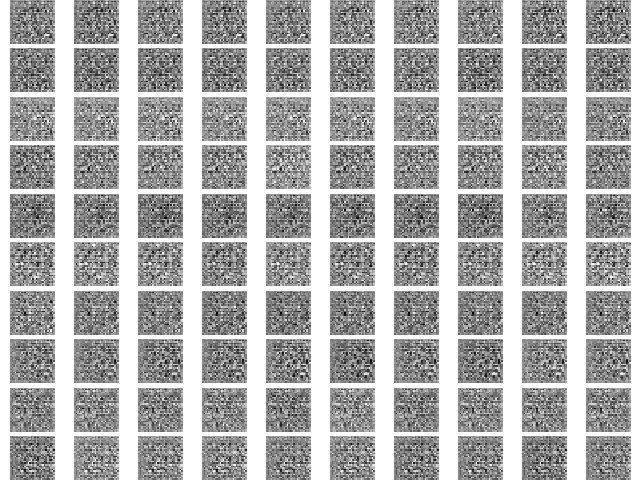This is a short implementation of a Conditional DCGAN, however if you need a cDCGAN for real-world use cases, please consider using a more serious implementation.
Here can be seen an interesting property of cGANs: each rows represent a random noise, and each columns represent samples that have been generated using this noise and a class-label. The generator is able to produce the right kind of digit we asked for using the same noise!
Here can be seen a cDCGAN trained on CIFAR-10 using the same networks architectures I used for MNIST, obviously it shows that we need to be careful when designing the architecture. It works better using more filters.
I'm a linux guy but I was running on Windows when I did this project.
- Python 3.5
- Tensorflow for Windows
- Matplotlib

